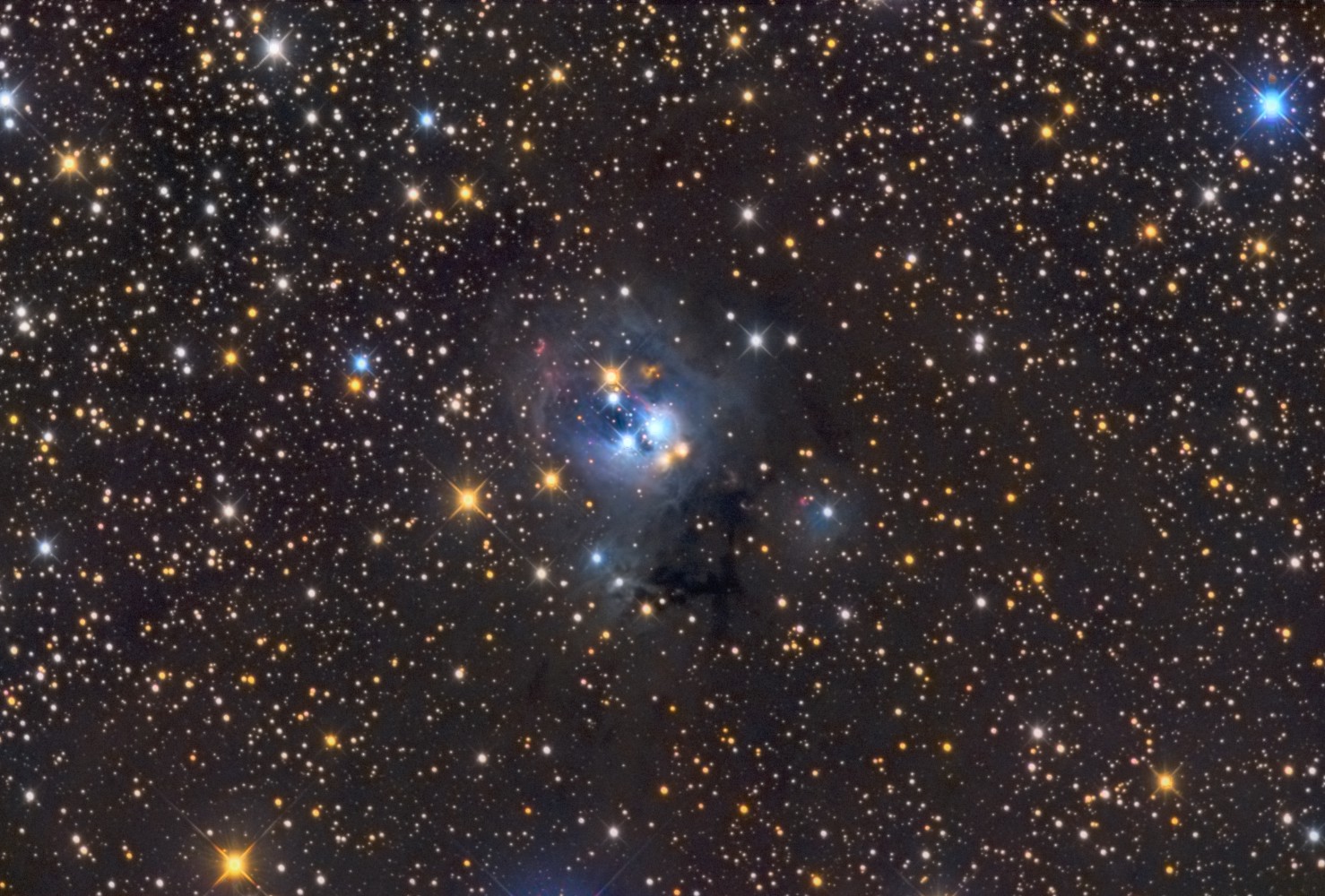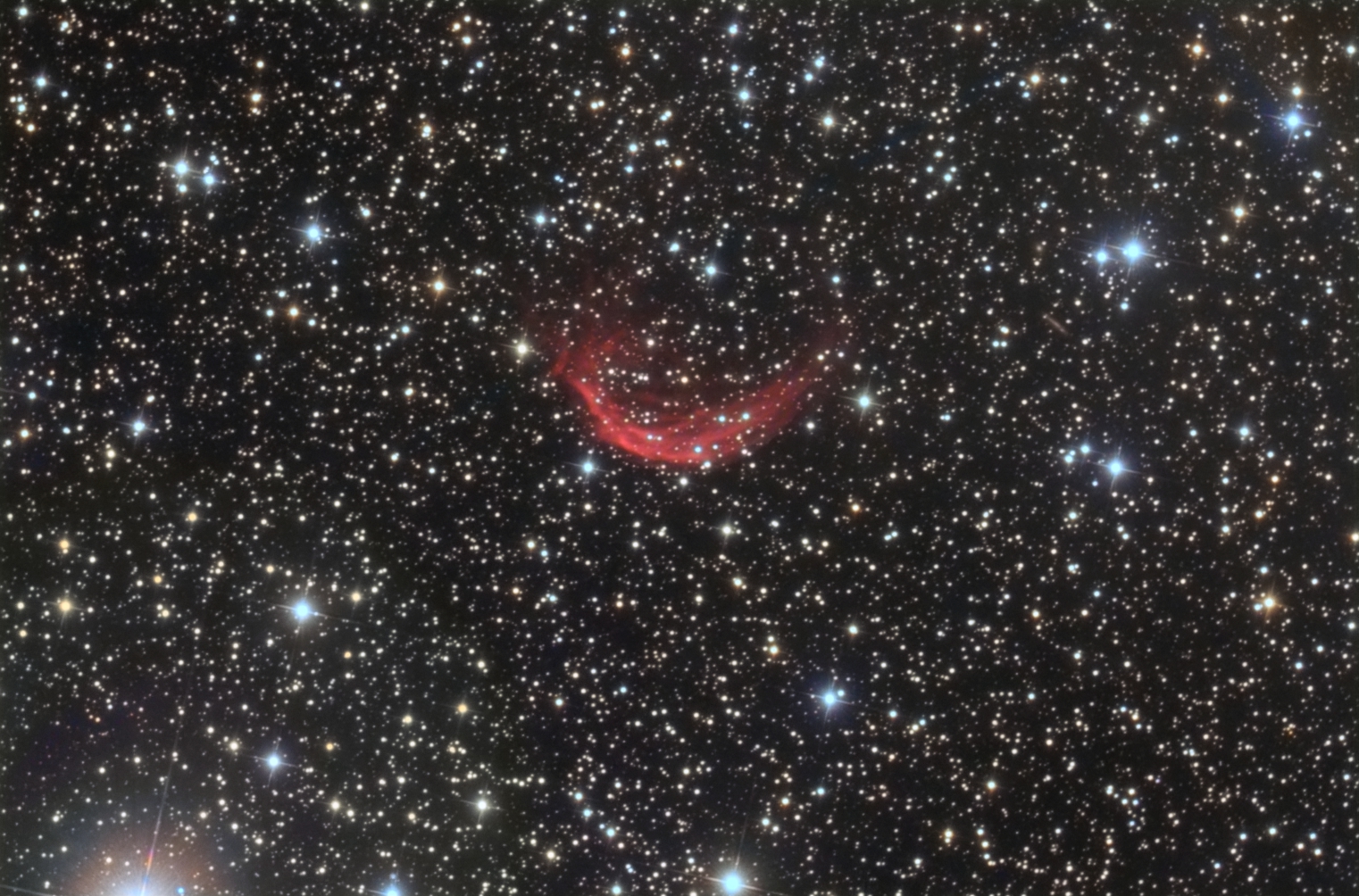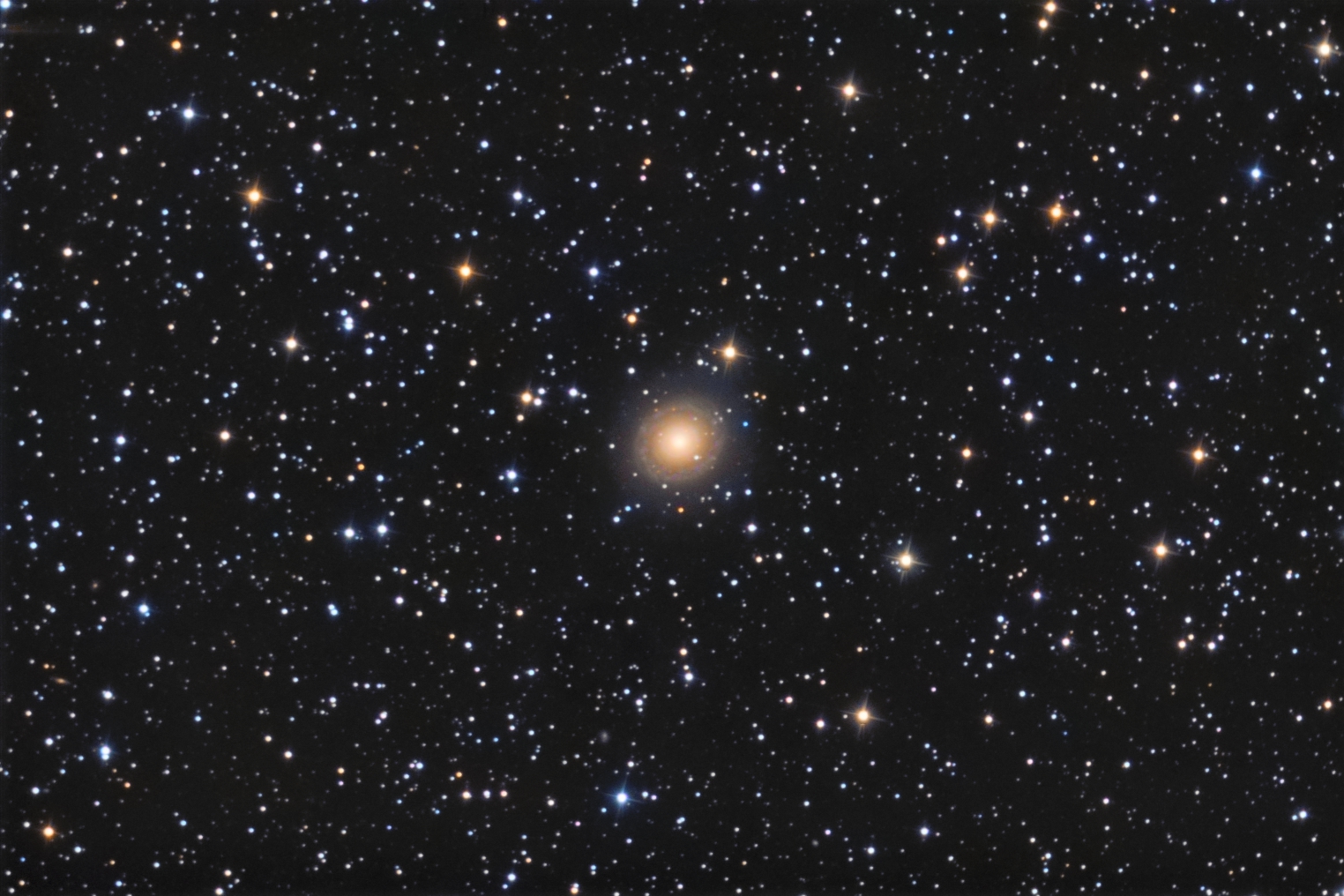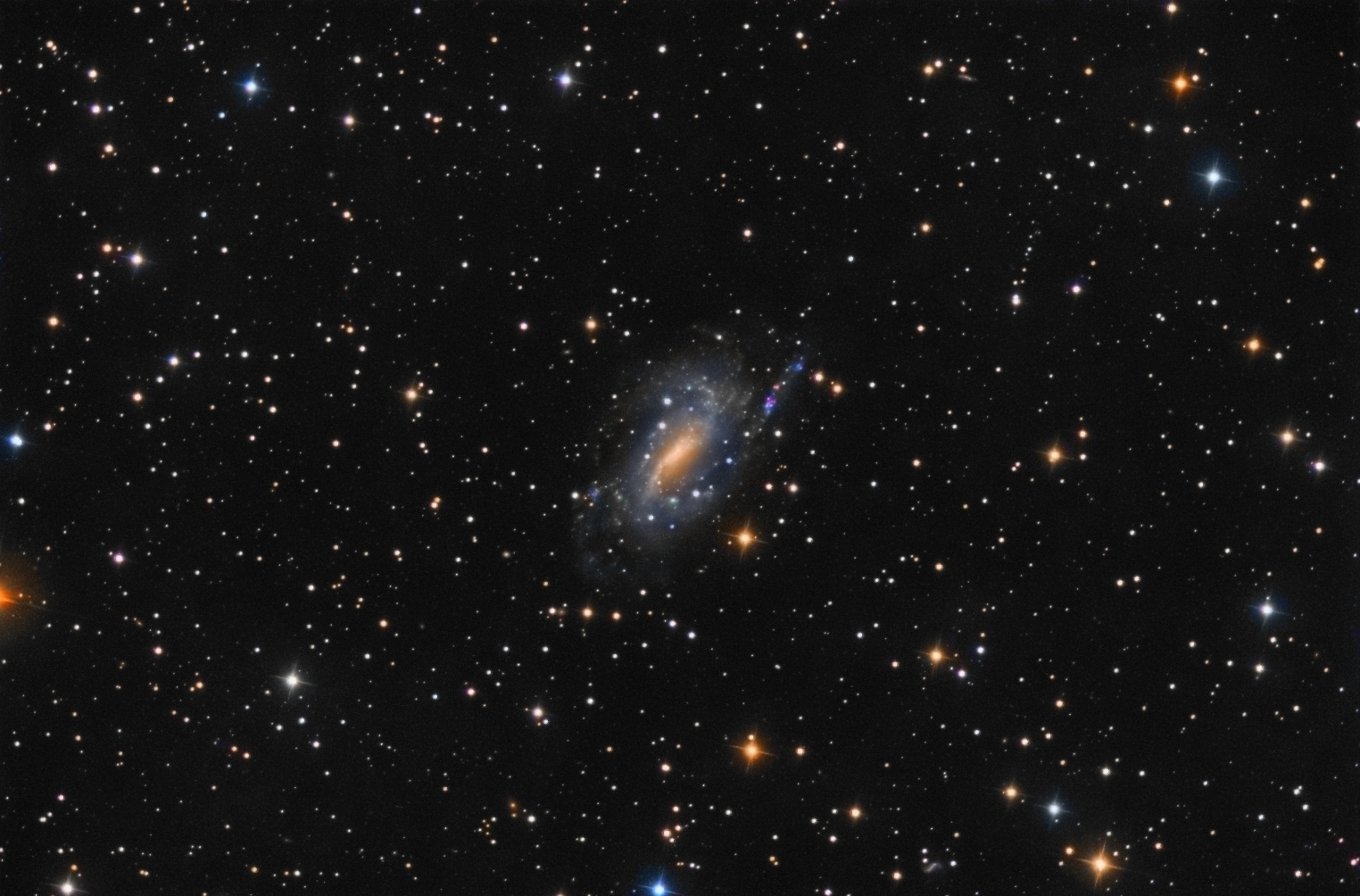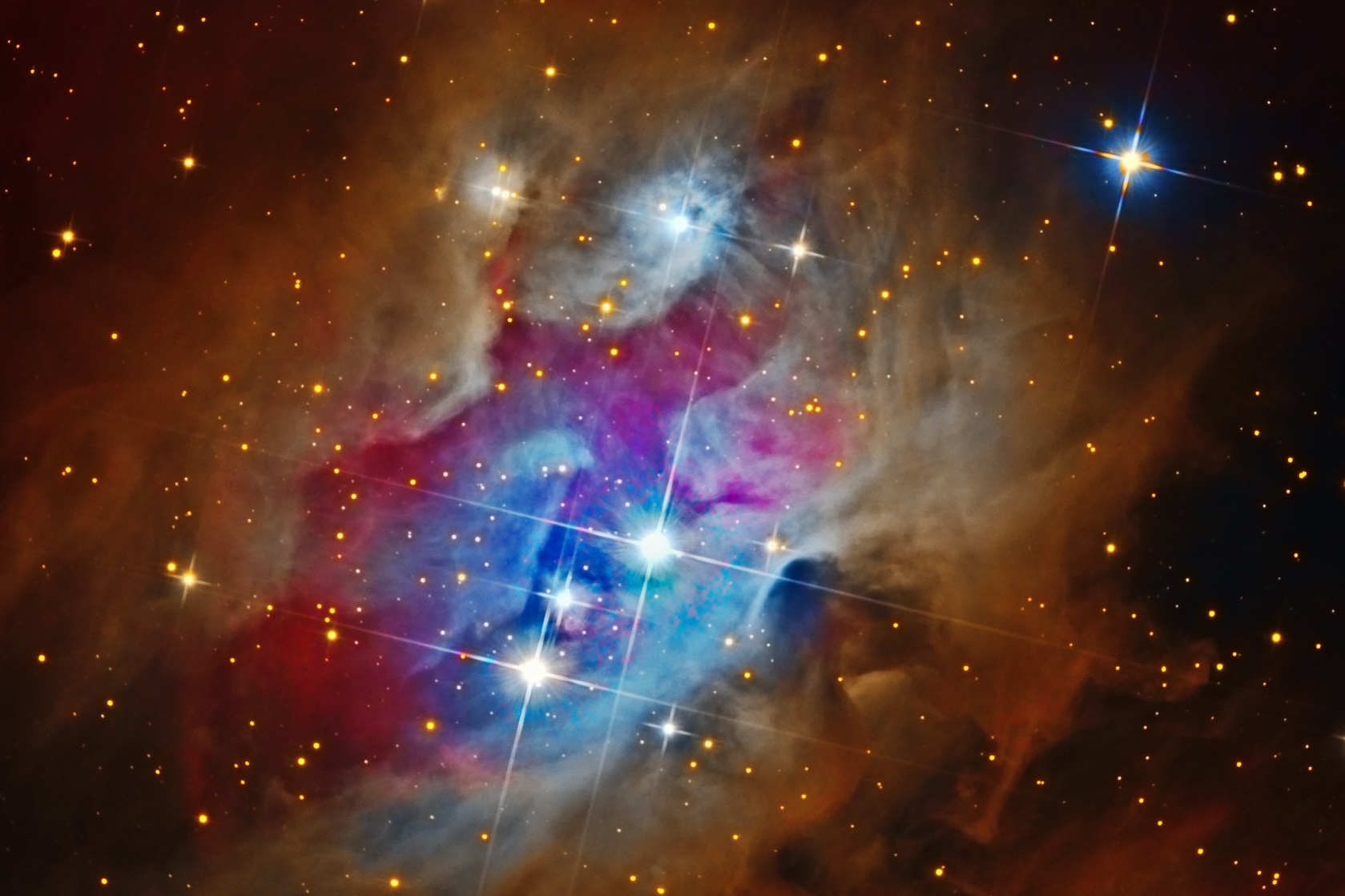Having been outrageously busy with AstroBin from mid September up to the time of writing, I literally had no time to process the most recent batches of subframes I’d been collecting. At some point I didn’t even have the time to acquire any subs at all, because due to the change to DST, my mount went out of alignment somehow.
Anyway, I can finally enjoy some respite, so let me present the most recent images I’ve taken.
NGC 7129
NGC 7129 is a reflection nebula located 3,300 light years away in the constellation Cepheus. A young open cluster is responsible for illuminating the surrounding nebula. A recent survey indicates the cluster contains more than 130 stars less than 1 million years old. NGC 7129 is located just half a degree from nearby cluster NGC 7142. The nebula is rosebud-shaped; the young stars have blown a large, oddly shaped bubble in the molecular cloud that once surrounded them at their birth. The rosy pink color comes from glowing dust grains on the surface of the bubble being heated by the intense light from the young stars within. The ultra-violet and visible light produced by the young stars is absorbed by the surrounding dust grains. They are heated by this process and release the energy at longer infrared wavelengths as photographed by the Spitzer Space Telescope. The reddish colors in the false-colour infrared image suggest the distribution of hydrocarbon rich molecular material. The much cooler molecular cloud outside the bubble is mostly invisible to Spitzer. However, three very young stars near the center of the nebula are sending jets of supersonic gas into the cloud. The collision of these jets heats carbon monoxide molecules in the nebula. This produces the complex nebulosity that appears like a stem of a rosebud.
(Source: Wikipedia)
SH-2 188
The image is of Sharpless 2-188, an unusual planetary nebula located in the constellation Cassiopeia. The expanding gas from the planetary nebula is colliding with ambient gas in the interstellar medium. The nebula is nearly circular in shape but is much brighter to the southeast (lower left) because the central star is moving rapidly in that direction. Faint wisps of gas can also be seen in the opposite direction.
(Source: NOAO)
NGC 7217
NGC 7217 is a gas-poor system whose main features are the presence of several rings of stars concentric to its nucleus: three main ones -being the outermost one the most prominent and the one that features most of the gas and star formation of this galaxy-, plus several others inside the innermost one discovered with the help of the Hubble Space Telescope, a feature that suggests NGC 7217’s central regions have suffered several starbursts, and a very large and massive spheroid that extends beyond its disk. Other noteworthy features this galaxy has are the presence of a number of stars rotating in the opposite direction around the galaxy’s center to most of them and two distinct stellar populations: one of intermediate age on its innermost regions and a younger, metal-poor on its outermost ones. It has been suggested these features were caused by a merger with another galaxy and, in fact, computer simulations show that NGC 7217 could have been a large lenticular galaxy that merged with one or two smaller gas-rich ones of late Hubble type becoming the spiral galaxy we see today; however right now this galaxy is isolated in space, with no nearby major companions.
(Source: Wikipedia)
NGC 925
NGC 925 is a barred spiral galaxy located about 30 million light-years away in the constellation Triangulum. The morphological classification of this galaxy is SB(s)d, which indicates that this has a bar structure and loosely wound spiral arms with no ring. The spiral arm to the south is stronger than the northern arm, with the latter appearing flocculent and less coherent. The bar is offset from the center of the galaxy and is the site of star formation all along its length. Both of these morphological traits — a dominant spiral arm and the offset bars — are typically characteristics of a Magellanic spiral galaxy. The galaxy is inclined at an angle of 55° to the line of sight along a position angle of 102°. This galaxy is a member of the NGC 1023 Group, a nearby, gravitationally-bound group of galaxies associated with NGC 1023. However, the nearest member lies at least 650 kly (200 kpc) distant from NGC 925. There is a 10 million solar mass cloud of neutral hydrogen attached to NGC 925 by a streamer. It is uncertain whether this is a satellite dwarf galaxy, the remnant of a past tidal interaction, or a cloud of primordial gas.
(Source: Wikipedia)
NGC 1977
This image was acquired in conjunction with Samuel Díaz.
NGC 1973/5/7 is a reflection nebula 1/2 degree northeast of the Orion Nebula. The three NGC objects are divided by darker regions. It is also called The Running Man Nebula and Sharpless Catalog 279. This object was named ‘The Running Man Nebula’ by Texas Astronomical Society member Jason Ware. Approximately 20 years ago his downstairs neighbor looked at the object and said it looked like a running man. He brought this up a TAS club meeting and the name stuck. Now widely accepted as ‘The Running Man’.
(Source: Wikipedia)

